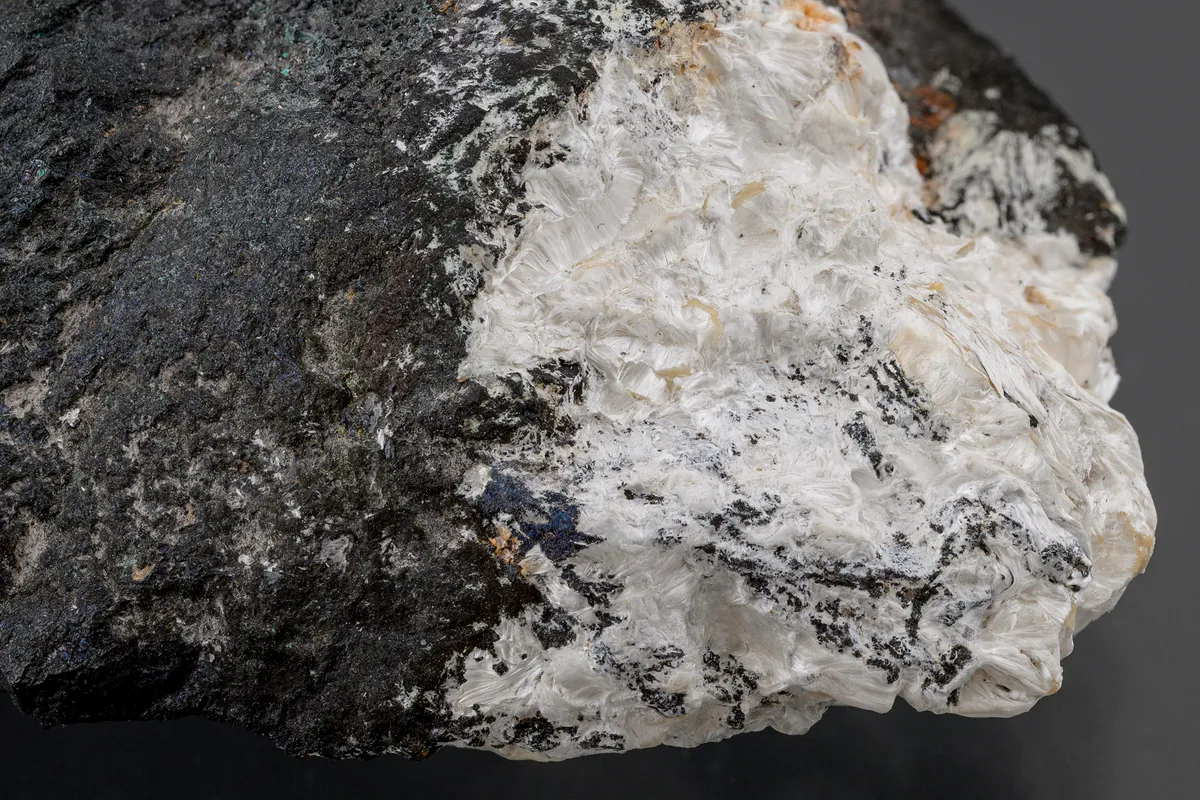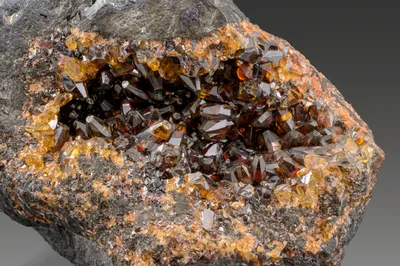
Image Credit: Malcolm Southwood
Mineral Species
Schaurteite
Type Locality
Yes
Composition
Ca3Ge(SO4)2(OH)6·3H2O
Crystal System
Hexagonal
Status at Tsumeb
Confirmed (type locality)
Abundance
Very rare
Distribution
Second oxidation zone
Paragenesis
Supergene
Entry Number
Species; TSNB307
Type Mineralogy
A previously unidentified fibrous white mineral occurring in calcite-lined cavities in partly oxidised germanium-rich sulphide ore was submitted for approval as a new mineral by Strunz and Tennyson (1967) who named it for Dr Werner T. Schaurte (1893-1978), a German chemist. Gebhard (1999) attributes the discovery of schaurteite to Dr A. P. G. Söhnge, geological superintendent at Tsumeb between 1950 and 1968 but, while Söhnge is one of three senior TCL personnel acknowledged for access to study material by Strunz and Tennyson (1967), his involvement with the discovery of schaurteite is not explicit in their description. Schaurteite is an IMA approved species with special project (1988) status (http://cnmnc.units.it/; accessed January 2023). The structure of schaurteite was solved by Origlieri and Downs (2013). The schaurteite holotype at the Institut für Mineralogie und Kristallographie, Technische Universität, Berlin, is reported as missing (https://www.ctms-jack.ch/list-of-minerals.html ; accessed February 2023). Additional type material is held at the Smithsonian Institution, Washington D.C. (catalogue number 144520) and co-type material is conserved at the Ecole Nationale Supérieure des Mines, Musée de Minéralogie, Paris (catalogue number 50983).
General Notes
Schaurteite is a hydrated sulphate of calcium and germanium and a member of the fleischerite group of minerals; it is the calcium analogue of fleischerite.
The type material was recovered from the second oxidation zone although the level in the mine was not specified. On the type specimen, schaurteite occurs as aggregated mats of very fine, fibrous, white crystals (to 2 mm in length) with a hexagonal cross section in cavities in partly oxidised germanium-rich sulphide ore. The cavities are lined with crusts of tiny white calcite crystals with the schaurteite resting on the calcite, rather than directly on the sulphide (Strunz and Tennyson 1967). This basic description was repeated by Bartelke (1976) and by Pinch and Wilson (1977).
Keller (1977a) provided advance notice that a new mineral, with working name "Mineral TI" had been discovered in "… similar cavities near schaurteite." Mineral TI was subsequently described and named otjitsumeite (Keller et al. 1981c), with schaurteite noted as a component of the type assemblage along with calcite, chalcocite, germanite, gypsum, quartz, renierite, siderite and tennantite.
Gebhard (1999) recalled that between 1986 and 1988 schaurteite was "… almost common for a short period. Clusters up to 5 cm diameter of white, silky irregular intergrown 1 cm needles have been found as well as a few fabulous specimens of white aggregates in germanite ore."
Schaurteite is readily confused with fleischerite (and possibly with biehlite, although the latter occurs in a very different paragenesis).
Associated Minerals
calcite; chalcocite; germanite; gypsum; larsenite; mathewrogersite; otjisumeite; quartz; renierite; schneiderhöhnite; siderite; tennantite-(Zn)






